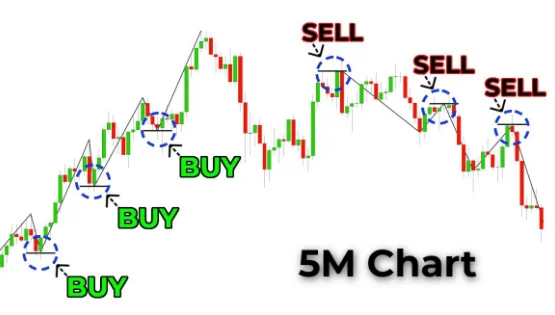
Swing trading is a potent tactic used by traders in the financial markets to profit from short- to medium-term price fluctuations. This piece explores the practice of swing trading and provides tips and tactics to help you increase your earnings and acquire a competitive advantage.
Introduction
Swing trading is a flexible method of trading that aims to combine the long-term perspective of investing with the quick pace of day trading. It entails taking advantage of price fluctuations within a predetermined window of time, usually ranging from a few days to several weeks. Swing traders take a more leisurely approach, often analyzing and executing trades on a daily or weekly basis, in contrast to day traders who might make multiple trades in a single day.
The Basics of Swing Trading
1. Identifying Market Trends
An acute understanding of market trends is the first step towards successful swing trading. It is essential to assess market conditions and determine the dominant trend prior to making any trades. Technical analysis tools like trendlines and moving averages are frequently used for this. Making wise trading decisions requires knowing if the market is consolidating, in an uptrend, or in a downtrend.
2. Selecting the Right Securities
It’s important to pick the right stocks to swing trade. Although a variety of assets, such as stocks, forex, and cryptocurrencies, can be used for swing trading, it’s crucial to concentrate on those with enough volatility and liquidity. While volatility offers chances for significant price swings, liquidity makes it easy to enter and exit positions.
3. Setting Entry and Exit Points
The secret to a profitable swing trade is knowing when to enter and when to leave. To determine the best times to enter and exit the market, swing traders frequently use technical indicators, levels of support and resistance, and chart patterns. To properly manage risk, it’s imperative to have a well-defined plan in place before making a trade, including stop-loss and take-profit orders.
Effective Swing Trading Strategies
1. Trend Following
Following trends is one of the most popular swing trading strategies. With this strategy, the dominant trend is identified and traded in that direction. To profit from prolonged price movements, swing traders align themselves with the market trend.
2. Breakout Trading
For swing traders, another well-liked tactic is breakout trading. It focuses on recognizing important price levels, like resistance and support, and entering trades when the market breaks through them. Breakouts frequently cause notable price changes, which present chances for financial gain.
3. Swing Highs and Lows
In swing trading, swing highs and lows are crucial moments. As a guide for entering and exiting trades, traders search for areas where prices have reached notable highs and lows. These points frequently show regions where prices are continuing or reversing.
Risk Management
One essential component of swing trading success is risk management. Stop-loss orders are a useful tool for traders to limit potential losses, and they should never take on more risk than they can afford to lose. Furthermore, distributing risk across a variety of assets can be achieved by diversifying your portfolio.
The Importance of Practice
Swing trading is a skill that takes time and practice to master. To improve your abilities and try out various strategies without risking real money, it’s best to start with a demo trading account. To further enhance your trading abilities, you must always be learning new things and keeping up with current events and news in the market.
Conclusion
Swing trading offers a dynamic and profitable approach to the financial markets. By mastering the art of identifying market trends, selecting the right securities, and employing effective trading strategies, you can aim to maximize your profits while minimizing risk. Remember, successful swing trading requires dedication, practice, and a commitment to ongoing learning. As you embark on your swing trading journey, stay disciplined and execute your trades with precision to achieve your financial goals.
FOR MORE INFO CLICK THIS SITE:https://learningsharks.in/
FOLLOW OUR PAGE:https://www.instagram.com/learningsharks/?hl=en












